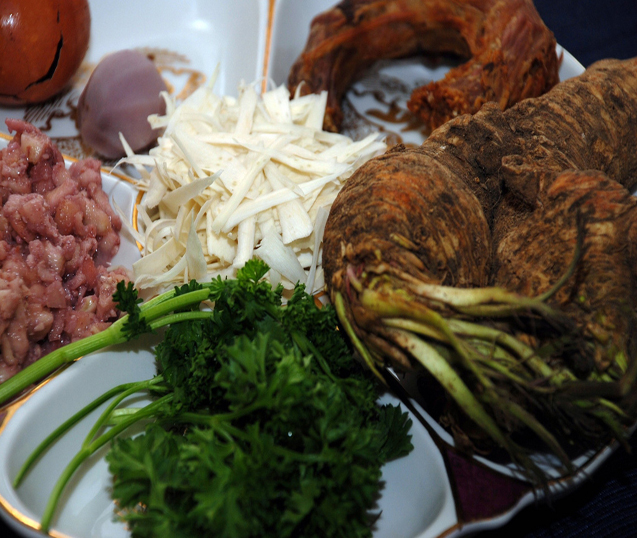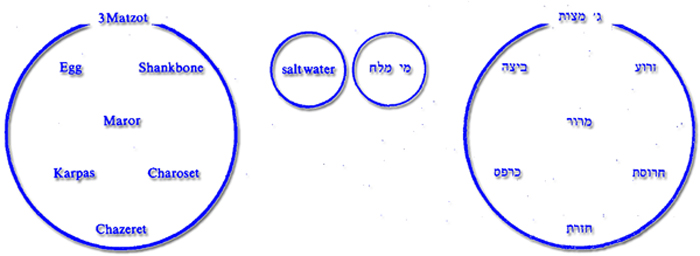Breslover Insights
Matza
Matzah symbolizes great awareness of God. The Jewish People ate it on the night of Redemption. They also brought the Matzah forth with them from Egypt. In it, they experienced the taste of manna, Bread from Heaven. It epitomized the clear perception that man’s sustenance is directly from God.
Mankind, though, is not yet ready for this overwhelming experience of God. Preparation is required. We must bring the deepest fibers of our souls into harmony and be willing to accept this eminent Truth.
First, we must put aside all notions of “knowing” God. We must realize that to know God is to realize that we can never really know Him.
We must therefore break the Matzah; separate this great awareness into fathomable sections. The larger portion is set aside for the “end.” In the End of Days, Man will rise again to his destined level of Awareness. Until then, we can utilize only the smaller part, the Lechem Oni (matzah is called “bread of poverty”), which is symbolic of the lack of that great knowledge.
Upon this Lechem Oni, upon this knowledge of our Unawareness, we recite the Haggadah. These are our prayers and words of faith that ultimately God will redeem us from the Darkness of Unawareness (Likutey Halakhot, Giluach 3:13-14).
Karpas
God sustains all life. Gratis. This is necessary for the Divine Plan of Creation.
Man is the one exception in Creation. He is created to be different, unique. God wants him to earn his sustenance. How? By praying! Man must become aware of the Hand that feeds him. His prayers must be the sincere and enthusiastic expression of that awareness, not the means of manipulation. Awareness! Prayer! This is Man’s true essence. (The Talmud teaches: Mav’eh, the beseecher, this is Man; Bava Kama 3b). This man, his prayer, is the purpose of Creation. If he would but pray, God would sustain him; no other act or physical effort on his part would be required.
Man once had the opportunity for true humanness. This was in Gan Eden. He had only to pray. His yearning, his prayers, would have “created” his sustenance. God would have made his prayers a reality. But Adam was not satisfied. He wanted to be like God. To create worlds (Likutey Halakhot, Orlah 5:3). He became aware of himself — that he “could.” Conceit at its
most subtle level. When he prayed, it was not simple yearning. He used his prayer. The “fruit” of his prayer became his goal; his prayer only a means (Likutey Halakhot, Minchah 7:29; Tefillin 6:4). Sometimes, we, too, use “prayer” for hidden motives….
God said to man: “You have abused your prayer; distorted your purpose; corrupted your essence. You have lost your true humanness, the source of your sustenance. Your existence is now only a means towards your ultimate re-elevation.
Together with your animals, I shall continue to sustain you. Gratis. You shall eat the greens of the field. Your bread will be bread of humiliation — Nahama de’Kisufa” (it is humiliating to receive gratis) (Likutey Halakhot, Mekach U’Memkar 4:2).
“Oh God!” Adam cried out. “Shall I share a plate with my donkey?”
God replied, “With toil you can attain human sustenance.” And Man was appeased.
Before the Seder we eat simple greens. We look at ourselves honestly, astonished by how far we have fallen into a less than human existence.
Kisufa (Aramaic), shame and humiliation. Kisuf (Hebrew), longing and yearning. We must become aware of our humiliating situation. Then we will long for God. Even in the moment of our shame, He has not forsaken us. Let us cry out for human sustenance, for Matzah, the bread of great yearning — the Nahama de’Kisufa (Likutey Halakhot, Netilat Yadaim 6:22,32,35).
“Oh God! Is there no more meaning to my eating beyond self-perpetuation?!”
And God will reply, “With yearning you can attain human sustenance.” And we will be appeased.
Shankbone
There are Upper Worlds. There are Lower Worlds.
On Earth itself, there are the more spiritually refined worlds — the “higher worlds.” There are also the less spiritual, more material worlds — the “lower worlds.”
There are those of us who were born into Jewishness or entered it at an early age. We were fortunate. We should be grateful. Thank God. But sometimes we forget. We fall into a habitual performance of our Jewishness, thinking that to know the
Torah intellectually is, per se, to know God. That to perform His mitzvot with cold, rational meticulousness is, per se, to be close to Him. Even so, we continue to see ourselves as living in the “higher worlds.”
Some of us were less fortunate. We were born at a time when, or in a place where, True Jewishness was unheard of. We didn’t stand a chance. Or, there are those of us who were born into Jewishness. But something happened along the way. We fell. And now, we see ourselves as “lower” than those of the “higher worlds.” We feel ourselves to be farther from God than those whom we presume to be “closer.”
The Jewish People in Egypt were becoming more and more aware of their distance from God. Of how they had fallen into a physical existence, of how they had strayed from God’s Will. And then Moshe told them that they would soon be leaving. They were hardly able to believe Moshe when he first returned to Egypt with word of the Redemption. It seemed even more implausible now. How unworthy they saw themselves! (Pesikta p. 47b). But Moshe met with the People. He spoke with them. He gave them to understand the secret of the Pesach lamb.
And when they slaughtered the lamb — the animal symbolic of their own physical existence — the fragrance of that sacrifice rose up High. God, as it were, descended into the depths of depraved Mitzrayim. He let it be known that before Him, the “low” and the “high” are one and the same, they can all be equally close.
Yet all remain infinitely far. For to know God, is to know the magnitude of one’s distance.
And the Jewish People experienced the secret of the Pesach lamb. They experienced Redemption (Likutey Halakhot, Netilat Yadaim 6:16).
Breslov Seder Plate Customs
Like most communities today, Breslover Chassidim arrange the ka’arah (Seder plate) according to the custom of the ARI zal. That is, the three matzot (Chokhmah-Binah-Da’at) are placed under the six simanim, with the zero’a / shankbone (Chesed) to the upper right, beitzah / egg (Gevurah) to the upper left, morror / bitter herbs (Tiferet) in the middle, charoset / chopped fruit and nuts with grape juice or wine (Netzach) to the lower right, karpas / celery, parsley, or another vegetable that grows from the ground (Hod) to the lower left, and chazeret / second portion of bitter herbs (Yesod) between them, under the morror. The ka’arah itself corresponds to Malkhus.
The matzot may be placed in a cloth bag with three sections; or between napkins; or in a special metal unit with three metal racks and a ka’arah on top. Rabbi Gedalia Kenig did not own a special holder, but used to rest a plate containing the simanim in small vessels directly on top of the covered matzot.
Rabbi Avraham Sternhartz used chrein for morror(as heard from Rabbi Michel Dorfman). Rabbi Gedalia Kenig’s minhag was to use romaine lettuce for morror, and took the “kepeleh,” the part from which the leaves grow, for chazeret on the Seder plate. (One should consult with their Rabbi about cleaning these for bugs.)
For karpas, Rabbi Gedalia Kenig at first used potatoes, and then changed to a raw celery root (not the stalks or leaves), in keeping with the view of the ARI zal. However, he also continued to serve cooked potatoes, which some people prefer. In any case, Breslover Chassidim do not use raw onions for karpas, in keeping with the Rebbe’s family mesorah that the Baal Shem Tov said not to eat raw onions (see Sichot Haran 265).
For zero’a, Rabbi Gedalia Kenig used a roasted chicken wing (as heard from Rabbi Yitzchak Kenig).
(Customs Source: Rabbi Dovid Sears – the Breslov Center)
Featured Photo Attribution: Kristen Taylor



1 comment
hi, thanks for this article! would you be able to elaborate on the correlations between the items on the kaarah and their corresponding sefira, and the message for us?